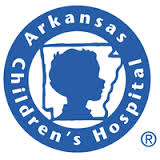Trial to Assess the Safety and Tolerability of Lucinactant for Inhalation in Premature Neonates
| Status: | Completed |
|---|---|
| Conditions: | Hospital, Pulmonary |
| Therapuetic Areas: | Pulmonary / Respiratory Diseases, Other |
| Healthy: | No |
| Age Range: | Any |
| Updated: | 4/21/2016 |
| Start Date: | February 2014 |
| End Date: | November 2015 |
A Multicenter, Randomized, Open-Label, Controlled Trial to Assess the Safety and Tolerability of Lucinactant for Inhalation in Preterm Neonates 29 to 34 Weeks PMA: Dose Escalation and Study Extension
The primary objective of this study is to evaluate the safety and tolerability of
aerosolized surfactant, specifically lucinactant for inhalation, administered in escalating
inhaled doses to preterm neonates 29 to 34 weeks gestational age who are receiving nasal
continuous positive airway pressure (nCPAP) for respiratory distress syndrome (RDS),
compared to neonates receiving nCPAP alone.
aerosolized surfactant, specifically lucinactant for inhalation, administered in escalating
inhaled doses to preterm neonates 29 to 34 weeks gestational age who are receiving nasal
continuous positive airway pressure (nCPAP) for respiratory distress syndrome (RDS),
compared to neonates receiving nCPAP alone.
Inclusion Criteria:
- Informed consent from a legally authorized representative
- Gestational age 29 to 34 completed weeks (34 weeks 6 days) post menstrual age (PMA)
- Successful implementation of controlled nCPAP within 90 minutes after birth
- Spontaneous breathing
- Chest radiograph consistent with RDS
- Need for moderate levels of supplemental oxygen and nCPAP to maintain oxygen
saturation of 88% to 95% for at least 30 minutes within the first 21 hours after
birth
Exclusion Criteria:
- Heart rate that cannot be stabilized above 100 beats/minute within 5 minutes of birth
- Recurrent episodes of apnea occurring after the initial newborn resuscitation period
(ie, 10 minutes after birth) requiring intermittent positive pressure breaths using
inflating pressures above the set CPAP pressure administered manually or mechanically
through any patient interface
- A 5 minute Apgar score < 5
- Major congenital malformation(s) and cranial/facial abnormalities that preclude
nCPAP, diagnosed antenatally or immediately after birth
- Other diseases or conditions potentially interfering with cardiopulmonary function
(eg, hydrops fetalis or congenital infection such as TORCH)
- Known or suspected chromosomal abnormality or syndrome
- Prolong rupture of membranes (PROM) > 2 weeks
- Evidence of hemodynamic instability requiring vasopressors or steroids for
hemodynamic support and/or presumed clinical sepsis
- Need for endotracheal intubation and mechanical ventilation
- Has been administered: another investigational agent or exposure to an
investigational medical device, any other surfactant agent, steroid treatment after
birth
We found this trial at
11
sites
Arkansas Children's Hospital Arkansas Children's Hospital (ACH) is the only pediatric medical center in Arkansas...
Click here to add this to my saved trials
University of Alabama at Birmingham The University of Alabama at Birmingham (UAB) traces its roots...
Click here to add this to my saved trials
University of Miami A private research university with more than 15,000 students from around the...
Click here to add this to my saved trials
Duke Univ Med Ctr As a world-class academic and health care system, Duke Medicine strives...
Click here to add this to my saved trials
Click here to add this to my saved trials
Loma Linda University Medical Center An outgrowth of the original Sanitarium on the hill in...
Click here to add this to my saved trials
University of Louisville The University of Louisville is a state supported research university located in...
Click here to add this to my saved trials
Click here to add this to my saved trials
Click here to add this to my saved trials
Providence St. Vincent Medical Center Providence St. Vincent is renowned for its many centers of...
Click here to add this to my saved trials
Click here to add this to my saved trials






